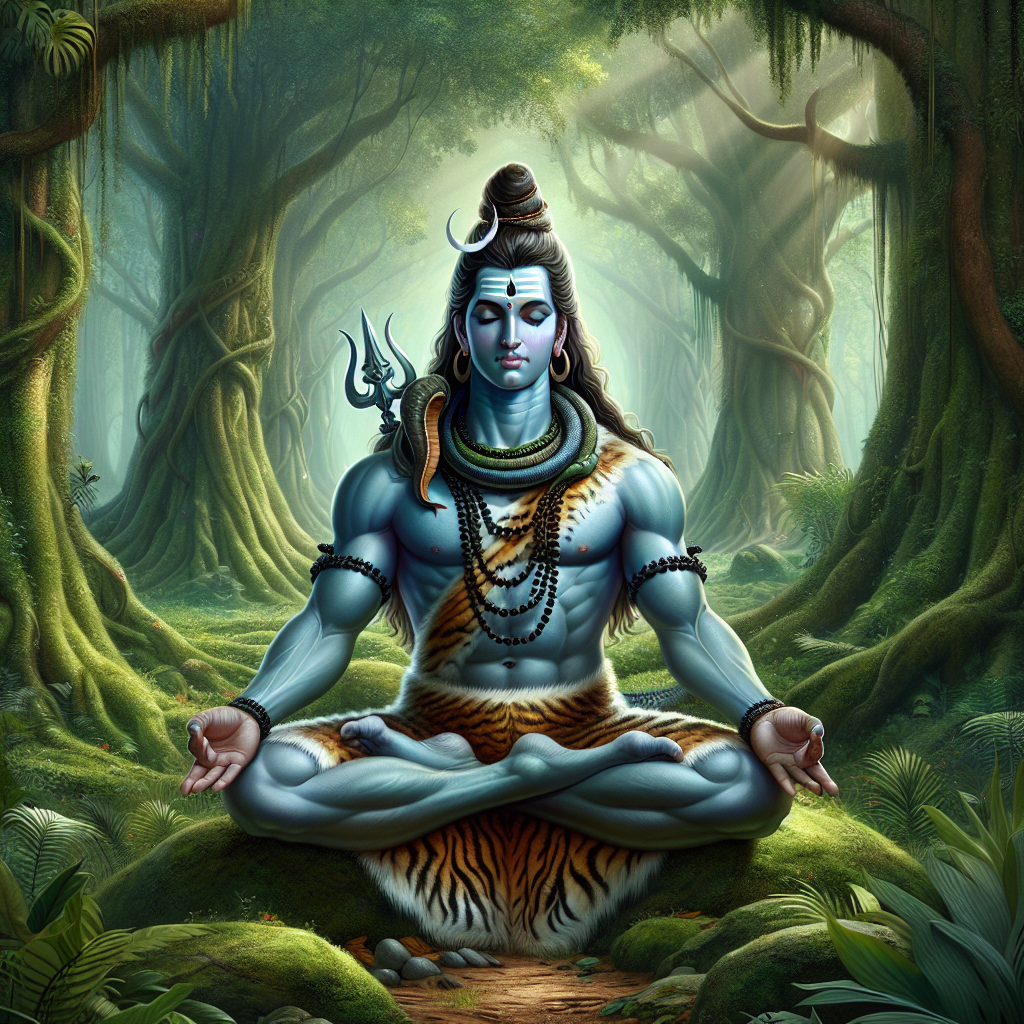
How shiva meditate
Exploring the Depths of Meditation: The Practices of Lord Shiva
Meditation is an ancient practice that transcends time and culture. It's an essential aspect of numerous spiritual traditions but holds a particularly revered place in Hinduism, especially in relation to Lord Shiva. Known as the God of Destruction, Transformation, and Regeneration, Shiva is also regarded as the supreme yogi. His profound connection with meditation offers insightful lessons to modern-day practitioners. Here, we explore the concept of meditation through the lens of Shiva, uncovering how his practices can guide our meditation journey.
The Significance of Lord Shiva in Hinduism
In Hindu theology, Shiva is an embodiment of ultimate reality. Worshipped across various sects, he represents paradoxes—beauty in ugliness, creation in destruction, and the cyclical nature of life. As the supreme yogi, his meditation techniques emphasize profound awareness and inner peace.
The Essence of Shiva's Meditation
Shiva’s meditation practices encompass a range of disciplines that lead to self-realization and cosmic consciousness. To meditate like Shiva, we must first understand the fundamental principles and practices that define his higher consciousness journey.
Key Elements of Shiva's Meditation Practices
- Focus on Breath: Breathing is central to meditation. Lord Shiva is often depicted in deep contemplation, embodying steady breaths that connect him to the universe.
- Mindfulness: In his meditative state, Shiva exemplifies complete awareness. Each sensation, thought, and emotion is acknowledged without attachment.
- Inner Silence: Emphasizing the importance of quietude, Shiva's meditation encourages practitioners to transcend noise, leading to a deeper understanding of self.
- Visualizations: Using images and symbols, such as the crescent moon or the Ganga river, during meditation can evoke the divine presence of Shiva.
- Devotion: Bhakti or devotion is integral. Devotees often contemplate the attributes of Shiva, proclaiming his greatness through chants to deepen their connections.
The Path to Meditative Mastery: Techniques Inspired by Shiva
Now that we've identified the key elements of Shiva's meditation, let’s delve into specific techniques inspired by his teachings that can enhance our meditation practice.
1. Pranayama: Harnessing Life Energy
Pranayama, the regulation of breath, holds a profound place in meditation. The practice allows an individual to control the prana or life force, creating a bridge between the physical and spiritual realms.
“When you practice pranayama, you are not merely inhaling and exhaling; you are awakening the dormant energy within.”
2. Dhyana: The State of Mindfulness
Dhyana or sustained concentration is a crucial aspect of Shiva's meditation. To achieve true dhyana, practitioners need to find a comfortable seat, close their eyes, and focus their attention inward. Gradually, distractions should fade, leading to a deeper awareness and connection with the universe.
3. Mantra Chanting: Connecting with the Divine
Chanting mantras such as "Om Namah Shivaya" can invoke a sense of peace and connection with the divine essence of Shiva. This practice not only calms the mind but also uplifts the spirit.
4. Visualization Techniques: Journeying Within
Visualize Lord Shiva meditating on Mount Kailash. Envision the serene landscape, the clear skies, and the flowing rivers. This imagery can enhance your meditation, providing a peaceful backdrop to your inner journey.
5. Engaging the Five Senses
As you meditate, involve your senses to deepen the experience. Light incense, play soft music, or use crystals that resonate with your energy. The tactile engagement makes the experience richer and more immersive.
Overcoming Challenges in Meditation
Meditation, while profoundly rewarding, can also present challenges. Here, we will explore common obstacles and strategies to overcome them, drawing inspiration from Shiva’s unwavering focus.
Identifying Common Hurdles
- Distracting Thoughts: The mind often wanders; this is natural. Acknowledge the distraction and gently bring your focus back to your chosen point of meditation.
- Physical Discomfort: A comfortable posture is essential. Try different sitting positions until you find one that allows you to focus without pain.
- Emotional Turbulence: Meditation can bring unresolved emotions to the surface. Rather than avoiding them, observe and acknowledge these feelings as part of your journey.
- Time Management: Finding time for meditation can be challenging. Consider short, daily practices that fit your schedule, gradually building your capacity.
Tips for Sustained Practice
- Consistency: Develop a regular meditation schedule that you can commit to. Even short sessions are beneficial if practiced regularly.
- Setting Intentions: Before each session, set a clear intention for what you hope to achieve, whether it's peace, insight, or clarity.
- Seek Community: Joining a meditation group can provide support and additional motivation. Sharing experiences with like-minded individuals can enhance your practice.
The Transformative Power of Meditation
Meditation holds transformative potential, guiding individuals toward enlightenment, peace, and profound self-discovery. As we practice techniques inspired by Lord Shiva, we embark on a path similar to the great yogi himself.
Benefits of Meditation Influenced by Shiva
| Benefit | Description |
|---|---|
| Stress Reduction | Regular meditation calms the mind, reducing anxiety and stress levels. |
| Improved Focus | Like Shiva's unwavering concentration, meditation enhances cognitive abilities and focus. |
| Emotional Well-Being | Fosters a deeper understanding of emotions, leading to personal growth and healing. |
| Spiritual Connection | Meditation cultivates a sense of union with the higher self and the universe. |
| Enhanced Creativity | With a calm mind, creative solutions and insights surface more easily. |
Conclusion: Emulating the Meditative State of Shiva
In the journey of meditation, we find resonance with the teachings and practices of Lord Shiva. By embodying his principles and techniques, we can enhance our understanding of self and cultivate a more profound connection with the universe. To meditate effectively, remember that, like Shiva, it is a journey that requires patience, dedication, and above all, a willingness to explore the depths of our consciousness.
As you approach your meditation practice, allow the essence of Shiva to guide you. Embrace the peace that comes with it and uncover the transformative power that lies within.
By Guest, Published on August 20th, 2024